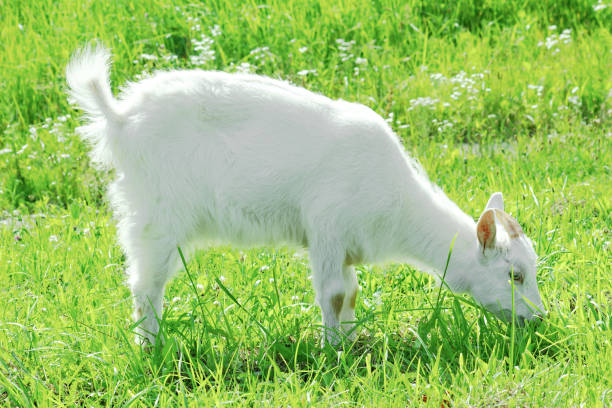If you’re a farmer or just want to raise goats, sooner or later you may have baby goats to care for particularly if you’re raising them for milking. Providing a baby goat, or a “kid,” with the right care, such as managing the birth, learning what to feed it, and how to maintain its shelter, is critical to help it grow into a healthy, hearty adult goat.






What to Do Right After Birth
:max_bytes(150000):strip_icc():format(webp)/raise-and-care-baby-goat-kids-3016479-11-9983ce5007bb4a58b3a1de8c100ce018.jpg)






Immediately after the baby goat is born, you should be present. This helps the baby goat imprint on you so it starts to get accustomed to human contact. There are three main actions to take after its birth:
Care for the umbilical cord: Allow the umbilical cord to break naturally, and only trim it if it is longer than four inches. You will want the cord to be about three to four inches in length. If you need to trim the cord, use a sterilized pair of scissors, then clean the cord with iodine, and allow the stub to fall off naturally.






Let mother and baby bond: If possible, leave the baby goat with the mother. She will lick the baby clean, and the baby goat and its mother will bond. The mother goat will likely eat some of the afterbirth; that’s fine. Your job is to stay and monitor the situation.
Feed the baby colostrum: Make sure the baby goat feeds from its mother within the first hour after birth. If the kid does not feed from its mother, you will need to bottle-feed it colostrum, the early milk that is high in nutrients and immune-building properties. Colostrum can come from its mother, another goat, or it can be purchased at a feed store.
Deciding How to Feed the Baby Goat






:max_bytes(150000):strip_icc():format(webp)/raise-and-care-baby-goat-kids-3016479-02-2a620a3fa1a44ef1801f16c7742b3320.jpg)






You will need to decide, preferably before birth, whether you will bottle feed the baby goat or if you’re going to have the mother raise and nurse the baby. The advantage of bottle-fed goats is that they are usually more attached to humans, they are tamer, and much less skittish. Even if you want to bottle-feed the baby goat, leave it with its mother for at least a few days so it can get the nutrient-rich colostrum into its system.
There are several advantages to having the mother nurse the baby. It’s less work on your part. There’s no need to feed the baby and you won’t need to milk the dam (another name for a mother goat). A dam-raised goat may be healthier when relying on its mother’s milk. Finally, a dam-raised goat may not be overly friendly to humans, but it also won’t jump on you or nip at your hands for feeding since it wasn’t bottle fed.








How to Bottle Feed Your Goat
If you decide to bottle feed, you will need to teach your baby goat to drink from a bottle. Squirting milk into its mouth quickly helps it associate the bottle with milk. Baby goats should be fed at least four times a day for the first month, and then you can reduce the number of feedings to three. Follow the advice of your vet on the exact amounts of milk to feed and any other supplements needed. If you plan to bottle feed, you will need a few items:2






- Goat baby bottle
- Lamb or kid nipple
- Goat milk replacement formula
- Colostrum replacement (if necessary)
How to Let the Mother Feed Her Goat
:max_bytes(150000):strip_icc():format(webp)/raise-and-care-baby-goat-kids-3016479-03-9532d165a075472ab7d2d3c791d5c47d.jpg)
If you allow the mother to raise the baby goat, she will do all the work. For the first six to eight weeks the baby goat will drink from its mother. Then you can transition the young kid to hay and other foods.5 If you choose this route, you’ll still want to spend lots of time cuddling and handling the baby goat so that it learns to tolerate human contact and does not end up skittish.






How to Transition From Milk to Solid Foods
Goats are ruminant animals which means they have a four-chamber stomach.
The rumen is one of the chambers that needs a little help to develop as it begins to wean.
Weaning usually begins to happen at around four weeks of age,8 though it can happen at six to eight weeks of age. Follow these guidelines to help its development during this time:








- At one week, start offering small amounts of grain to help jump-start the baby goat’s rumen development.
- At one month, offer hay, small amounts of grain, fresh water, and pasture time to a baby goat.
- Also at one month, slowly decrease the amount of milk (if bottle-feeding) you offer until your baby goat is eating just like the adult goats.
- As soon as possible, provide your kid (and adult goats) with loose goat minerals to support muscle growth and milk lactation. A mineral block may be too hard for a goat’s soft tongue, but you can also offer one in addition to loose minerals.








